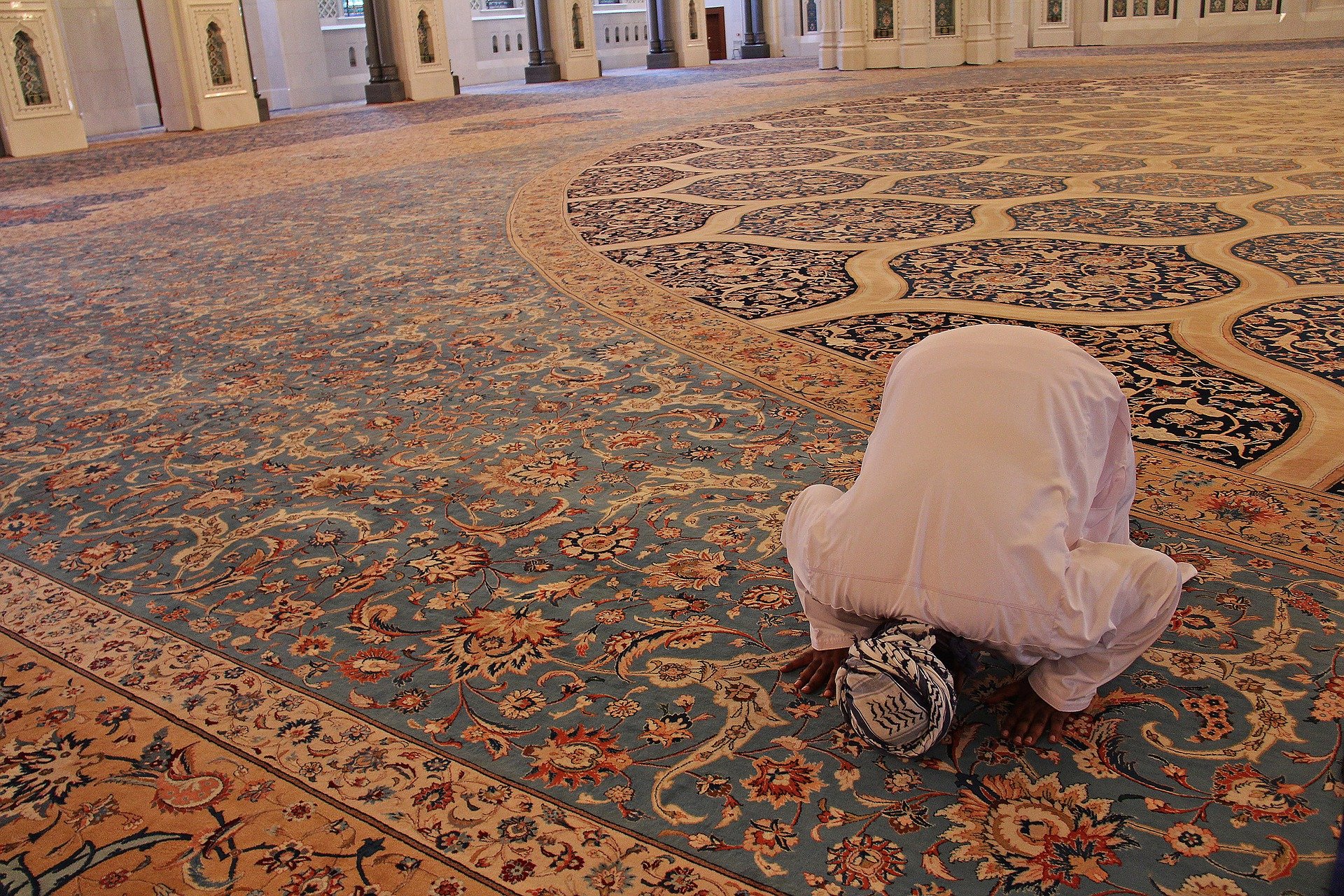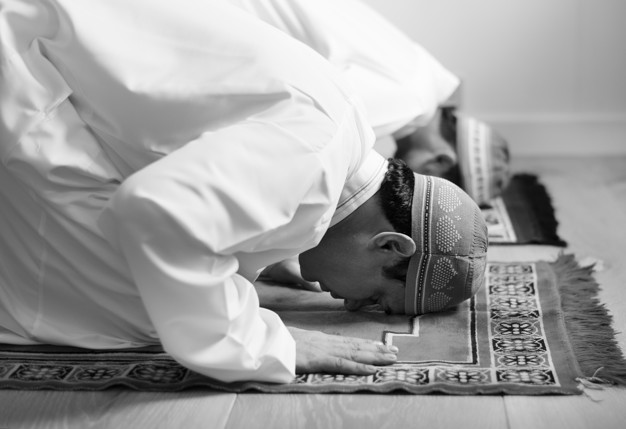Intentions and Procedures for Friday Prayer, Also Know Its Sunnahs
Friday prayer is indeed a special practice. Therefore, it is essential for every Muslim man to know and understand the recitation of the Friday prayer intention.

Kapanlagi.com - Islam makes it easy for its followers to perform prayers in a combined (jamak) or shortened (qashar) manner. However, there are conditions that need to be met in order to perform combined prayers.
Combined prayers are prayers performed by combining or merging two obligatory prayers into one time. This means that Dhuhr prayer can be combined with Asr prayer, and Maghrib prayer can be combined with Isha prayer in one time. However, combined prayers are exempted for Fajr prayer.
READ ALSO: Proper Way to Pray While Sitting on a Train and Bus, Pay Attention to the Position
Although it is convenient and even lightens the burden, it does not mean that every prayer can be combined or shortened, as there are conditions and regulations that must be met in order to perform combined prayers. For example, it is related to the distance of the journey being undertaken.
For that reason, several things about combined prayers such as the discussion below can be used as a reference for you. Among them are the types of combined prayers, the intention for combined prayers, the procedure for combined prayers, the conditions for combined prayers, and the time for performing combined prayers.
The following is information about combined prayers, including the types of combined prayers, the intention for combined prayers, the procedure for combined prayers, the conditions for combined prayers, and the time for performing combined prayers, which has been summarized by kapanlagi.com from various sources.

(credit: freepik.com)
As mentioned in the previous review, Islam makes it easier for its followers to perform obligatory prayers by combining and shortening prayers. However, there are conditions and regulations that must be met in order to perform combined prayers. If these conditions are not met, combined prayers cannot be performed. The conditions for performing combined prayers are as follows:
Things allowed for combined prayers:
- Traveling a distance of approximately 4 burd or 88,656 km.
- Traveling for a good cause, not something negative or sinful.
- In dangerous situations such as disasters, including heavy rain or even war.
- Urgent situations, such as severe illness.
Conditions for combined prayers:
- Reciting the intention for combined prayers according to the specific combined prayers being performed, whether it is taqdim or ta'khir.
- Immediately performing combined prayers, meaning combining two obligatory prayers without performing the sunnah prayers.
- Still on a long journey or being a traveler.
- Orderly.

(credit: freepik.com)
Combined prayer is a prayer that is performed by combining or collecting two obligatory prayers into one time to be performed together. Combined prayer is classified into two types, namely taqdim and takhir.
Taqdim combined prayer is performed by combining two obligatory prayers into one time by performing it at the earlier prayer time. For example, performing combined Dhuhr prayer with Asr prayer during the Dhuhr time. The same goes for Maghrib and Isha prayers performed during the Maghrib time.
On the other hand, takhir combined prayer is performed by combining two obligatory prayers into one time by performing it at the latest prayer time. For example, performing combined Dhuhr and Asr prayers during the Asr prayer time. The same goes for Maghrib and Isha prayers performed during the Isha time.

(credit: freepik.com)
After knowing what is allowed in congregational prayer, the conditions for congregational prayer, the types and times of performing congregational prayer, it is important to know how to recite the intention for congregational prayer. Because reciting the intention for congregational prayer is one of the valid conditions for prayer. Here is the recitation of the intention for congregational prayer.
Recitation of the intention for congregational prayer in advance:
"Ushollii fardhol dhuhri arba'a roka'atin majmuu'an ma'al ashri jam'a taqdiimi lillaahi ta'aalaa."
Meaning: "I intend to perform the four units of Dhuhr prayer combined with the Asr prayer in advance for the sake of Allah Ta'ala."
Recitation of the intention for congregational prayer in the end:
"Ushollii fardlozh maghribi thalaatha raka'atin majmuu'an ma'al 'isyaa'i Jam'a ta-khiirinin adaa-an lillaahi ta'aalaa."
Meaning: "I deliberately perform the three units of Maghrib prayer combined with Isha prayer, with the intention of combining the prayers in the end, for the sake of Allah Ta'ala."

(credit: freepik.com)
As for the procedures for performing congregational prayer, you need to understand them based on the correct sequence. So, when you have fulfilled the requirements for performing congregational prayer, the following procedures for performing congregational prayer can be used as a reference.
1. Congregational Prayer in Advance
Dhuhr and Asr:
- Recite the intention for congregational prayer according to the time of its performance, which is in advance. For example, if you are performing congregational prayer for Dhuhr and Asr in advance, the intention used is the intention for congregational prayer in advance.
"Ushollii fardlozh zhuhri arba'a raka'atin majmuu'an ma'al ashri adaa-an lillaahi ta'aalaa."
Meaning: "I intentionally perform the obligatory Dhuhr prayer, 4 units, combined with Asr prayer, obligatory for the sake of Allah Ta'ala."
- After performing the Dhuhr prayer, continue with the Asr prayer using the following intention for congregational prayer.
"Ushollii fardlozh ashri arbaa rakaaatin majmuuan maal dzuhri adaa-an lillaahi taaalaa."
Meaning: "I intend to perform the Asr prayer, 4 units, combined with Dhuhr prayer, obligatory for the sake of Allah Ta'ala."
Maghrib and Isha:
- Recite the intention for congregational prayer according to the time of its performance, which is in advance.
"Ushollii fardhol maghribi tsalaatsa roka'aatin majmuu'an ma'al isya'i jam'a taqdiimi lillaahi ta'aalaa."
Meaning: "I intend to perform the obligatory Maghrib prayer, 3 units, combined with Isha prayer, in advance for the sake of Allah Ta'ala."
- After performing the Maghrib prayer, continue with the Isha prayer using the following intention for congregational prayer.
"Ushollii fardlozh isyaai arbaa rakaaatin majmuuan maal maghiribi jama taqdiimin adaa-an lillaahi taaalaa."
Meaning: "I intend to perform the Isha prayer, 4 units, combined with Maghrib prayer, with the intention of congregational prayer in advance, obligatory for the sake of Allah Ta'ala."
2. Congregational Prayer in the End
Dhuhr and Asr:
Recite the intention for congregational prayer in the end with the following intention:
"Ushollii fardlozh zhuhri arba'a raka'atin majmuu'an ma'al ashri adaa-an lillaahi ta'aalaa."
Meaning: "I intentionally perform the obligatory Dhuhr prayer, 4 units, combined with Asr prayer, obligatory for the sake of Allah Ta'ala."
- After completing the congregational prayer for Dhuhr, continue with the Asr prayer using the following intention:
"Ushollii fardlol 'ashri arba'a raka'atin majmuu'an ma'azh zhuhri adaa-an lillaahi ta'aalaa."
Meaning: "I intentionally perform the obligatory Asr prayer, 4 units, combined with Dhuhr prayer, obligatory for the sake of Allah Ta'ala."
Maghrib and Isha:
- Recite the intention for congregational prayer in the end with the following intention:
"Ushollii fardhol isya'i arba'a roka'aatin majmuu'an ma'al maghribi jam'a takhiiri lillaahi ta'aalaa."
Meaning: "I intend to perform the obligatory Isha prayer, 4 units, combined with Maghrib prayer, in the end for the sake of Allah Ta'ala."
- After completing the congregational prayer for Maghrib, continue with the Isha prayer using the following intention:
"Ushollii fardlozh 'isyaa'i arba'a raka'atin majmuu'an ma'al magribi Jam'a ta-khiirinin adaa-an lillaahi ta'aalaa."
Meaning: "I intend to perform the Isha prayer, 4 units, combined with Maghrib prayer, with the intention of congregational prayer in the end, obligatory for the sake of Allah Ta'ala."
Those are the intentions for congregational prayer and their procedures. Understand the time of their performance and their conditions. Hopefully, the above explanation can help you perform congregational prayer.
Sources: Brilio.net, liputan6.com, dalamislam.com
(kpl/nlw)
Cobain For You Page (FYP) Yang kamu suka ada di sini,
lihat isinya
Friday prayer is indeed a special practice. Therefore, it is essential for every Muslim man to know and understand the recitation of the Friday prayer intention.
Here is about Sholat Lailatul Qadar on the last 10 nights of Ramadan. Let's check out the review, KLovers!
Here are the specialities of fasting on Friday along with practices to increase blessings.
Here are 75 words of Thursday that give spirit and prayer to face the day. Let's check it out KLovers.
In Islam, before burying the deceased, they must first be washed, shrouded, and then prayed. Therefore, it is a necessity for Muslims to master each of these procedures, especially the prayer reading for the deceased.
Here are 45 cool and inspirational morning motivation quotes to start your day. Let's check them out, KLovers.
Through repentance prayer, Muslims can prove themselves to Allah SWT to return to the right path. Let's check out the review, KLovers!
For stock during Eid, you don't need to bother queuing at the cake shop. Because, the snow princess recipe is very easy to make at home.
Without further ado, here are the recipes for chicken soto from various regions in Indonesia that are suitable for the iftar menu.
The pre-dawn voluntary prayer is also known as the dawn voluntary prayer. This is the intention and procedure for the pre-dawn prayer.
Here are 10 latest beautiful and elegant mukena motif trends, could be the best choice for Hari Raya. Let's check it out KLovers.
Tahajud prayer is one of the sunnah prayers that is often performed. Therefore, it is important for every Muslim to know and understand the intention of Tahajud prayer.